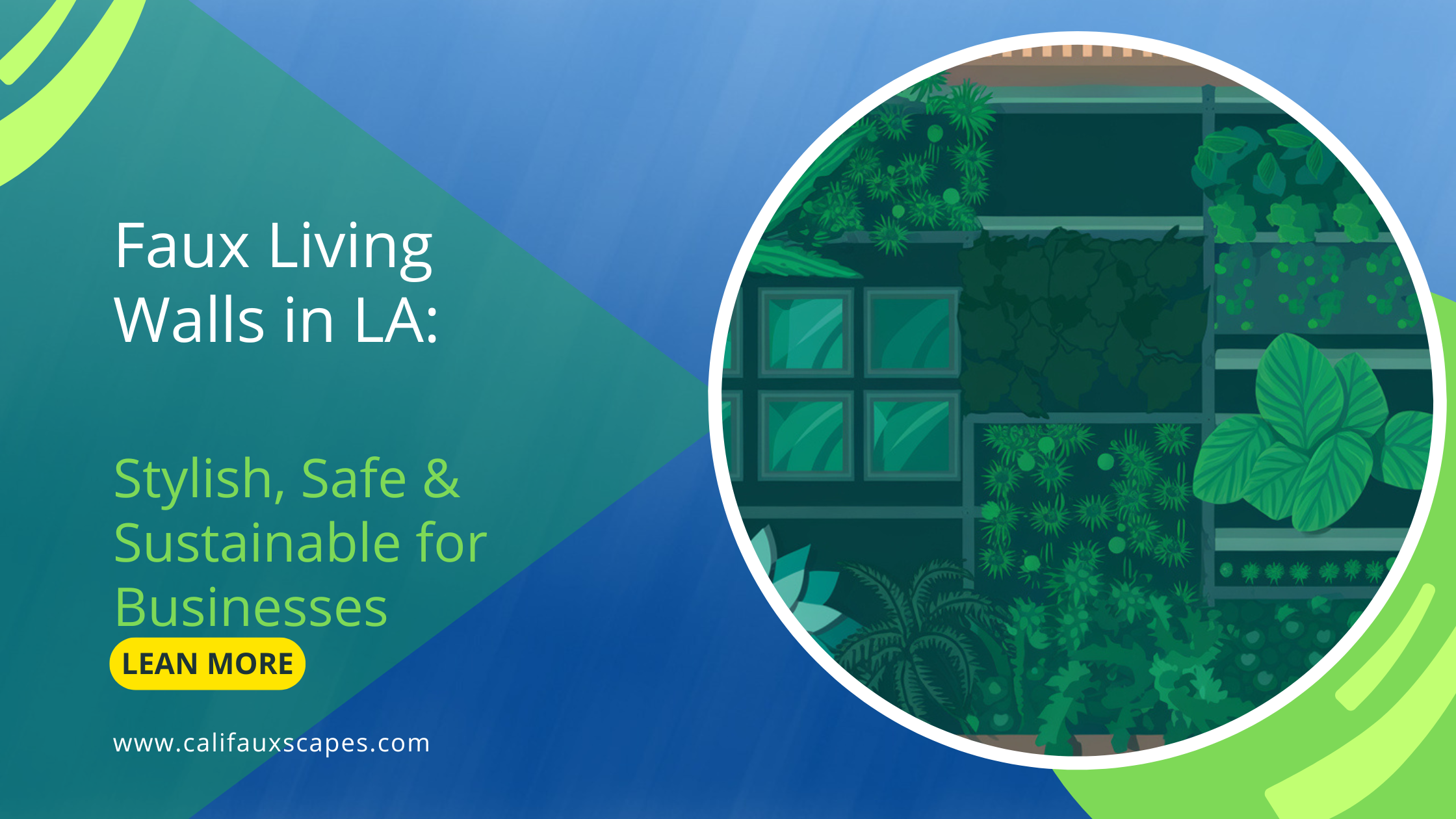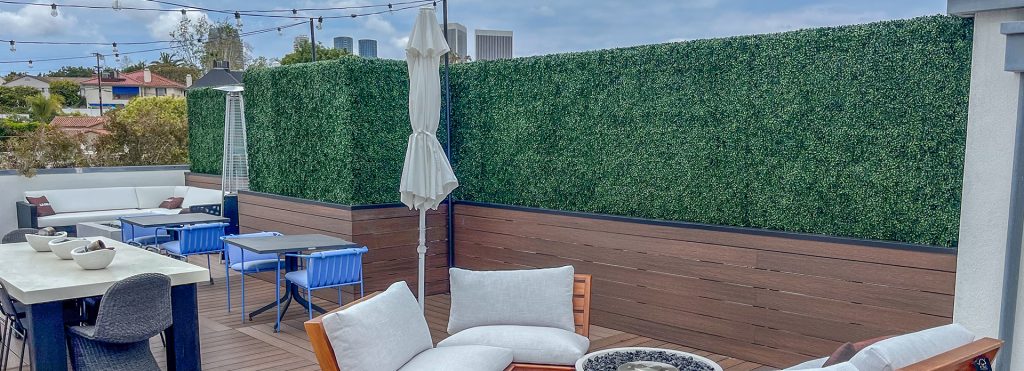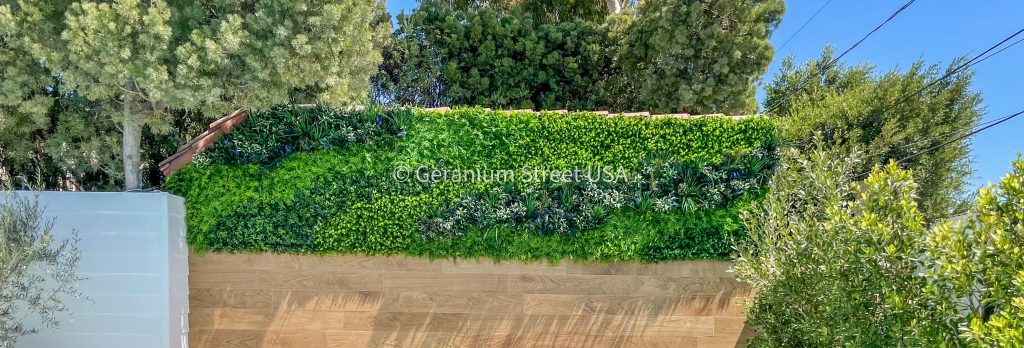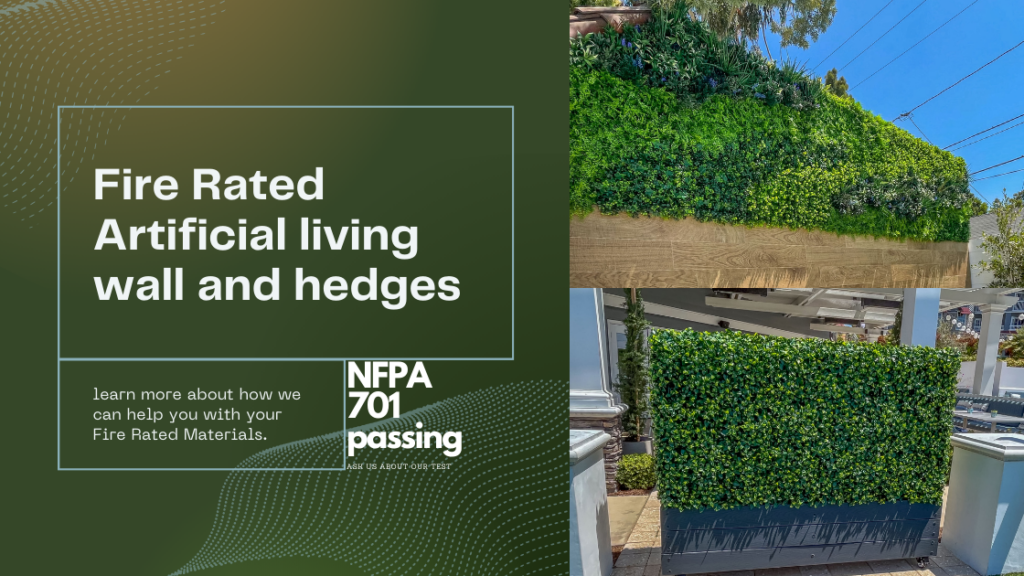
Los Angeles’s trendy hotels, restaurants, and offices are increasingly adorned with lush faux living walls that bring a burst of green into urban spaces. These artificial plant walls deliver the visual impact of real greenery without the downsides. In a city known for both its design flair and its droughts, faux living walls have become a smart choice for hospitality and commercial applications. This article explores how artificial green walls offer cost-effective installation and upkeep, crucial fire-retardant safety features, and significant water conservation benefits—making them an ideal solution for Los Angeles businesses looking to combine style with sustainability.
Cost-Effectiveness and Low Maintenance Benefits
Real living plant walls are beautiful, but they come with hefty costs—both upfront and ongoing. Faux living walls, by contrast, are remarkably cost-effective for business owners and property managers:
- Lower Installation Costs: Traditional living walls can cost anywhere from $110 to $175 per square foot when you factor in structural support, irrigation systems, grow lights, and more. Faux green wall panels, on the other hand, often cost only a fraction of that. Standard artificial foliage designs range roughly $15–$17 per sq. ft., with even high-end, ultra-dense panels around $20–$25 per sq. ft. at most plus installation. This dramatic difference in price per square foot means a big project (say a hotel lobby feature wall) can be done for much less by going faux.
- Minimal Maintenance Expenses: Keeping real plant walls alive and lush requires constant care – automated watering, fertilizing, pruning, replacing dead plants, and managing pests. Many businesses must hire professional horticulture services to tend live walls monthly, which adds around $1.50–$3.00 per square foot per year in maintenance contracts. Faux living walls essentially eliminate these ongoing costs. There’s no need for watering, trimming or replanting – just an occasional dusting to keep the leaves clean. As one industry guide notes, an artificial green wall “doesn’t need [professional care]; just dust it off now and then,” versus the constant upkeep real plants demand.
- Avoided Utility and Upkeep Costs: Because artificial walls require no irrigation or special lighting, businesses also save on utility bills and equipment. There are no water bills for irrigation or expensive irrigation systems to install. Similarly, there’s no need to run grow lights (which consume electricity) in darker interior spaces. Over years of operation, these savings are significant. (Not to mention avoiding costs of soil, fertilizers, and pesticides that real plants would need.) All told, a faux living wall is often a one-time investment that stays green with minimal spending after installation.
- Long-Term Durability: High-quality faux foliage is built to last. Many products are UV-resistant for outdoor use so they won’t fade or crack, and they don’t “die” like real plants. This means the installation can look good for many years without replacement costs. By contrast, live walls often require periodic plant replacements or system repairs. The longevity of artificial installations further improves their cost-effectiveness over time.
Flame Retardant Foliage for Fire Safety Compliance
Safety is paramount in any commercial or hospitality setting, and fire regulations in California are famously strict. One key advantage of quality faux living wall products is that they can be made flame-retardant to meet fire codes and keep guests safe. In fact, fire-resistant artificial greenery has become a must-have for many public venues:
- Meeting Stringent Fire Codes: California’s Office of the State Fire Marshal requires that decorative materials in public spaces (like hotels, restaurants, malls, and theaters) be nonflammable or treated with fire-retardant chemicals, a rule that explicitly includes artificial plants and greenery. In places of public assembly – which covers everything from hotel lobbies and restaurants to offices and schools – any large decor feature must not pose a fire hazard. That means a faux living wall installed in a Los Angeles restaurant or boutique must use fire-retardant foliage to satisfy city fire codes and pass safety inspections.
- Class A Fire Ratings: Reputable manufacturers produce artificial plant walls that are laboratory-tested and certified to high fire-safety standards. Often the materials carry a Class A flame-spread rating (the 2nd highest level) per ASTM E84, which is equivalent to the standards for interior finishes in commercial buildings. Many also pass NFPA 701 and 705 fire tests, indicating they won’t readily ignite or spread flames. In practical terms, this means these faux plants will not quickly catch fire or emit dangerous smoke, buying valuable time in an emergency. Business owners should look for products labeled inherently fire retardant (IFR) or certified by the State Fire Marshal to ensure compliance.
Water Conservation in Drought-Prone Los Angeles
Perhaps the most compelling benefit of faux living walls in Southern California is their water-saving potential. Los Angeles has long battled droughts and water shortages, leading to strict conservation measures. In this context, an always-green wall that needs zero irrigation is incredibly attractive for sustainable design:
- Zero Water Usage: Live plant walls typically require either an integrated irrigation system or frequent hand-watering to keep plants healthy – either way, they consume a lot of water. By contrast, a faux living wall doesn’t need any watering at all. This completely eliminates the water demand of that feature. Given that maintaining a real green wall could use dozens or hundreds of gallons per week (especially outdoors in the Southern California sun), the savings are substantial.
By embracing faux living walls, Los Angeles hotels, restaurants, and commercial properties can significantly reduce water consumption without sacrificing greenery. This is a crucial consideration as climate change brings longer droughts. An artificial green wall lets you have a verdant, nature-inspired design and be a responsible water steward – a combination that is increasingly non-negotiable in Southern California’s built environment.
Conclusion: Lush Looks, Smart Investment
Faux living walls have emerged as a smart, future-proof design choice for LA’s hospitality and commercial spaces. They provide all the aesthetic appeal of vertical gardens while offering dramatically lower costs, virtually no maintenance hassles, full compliance with fire safety codes, and big water savings in a drought-prone climate. With modern high-quality materials, it’s often hard to tell a faux living wall from a live one, so guests get the same vibrant experience while owners get peace of mind knowing their investment is low-maintenance and fully compliant with safety codes.



